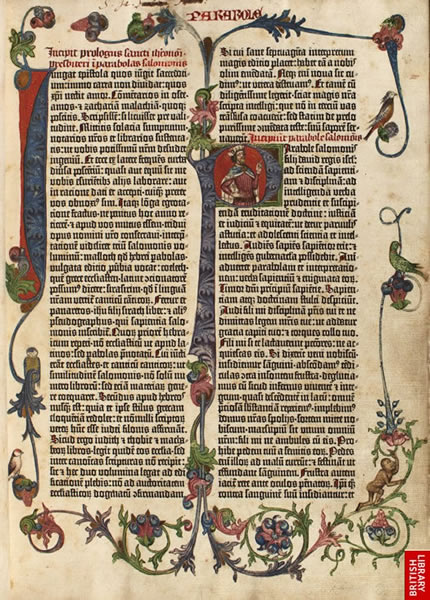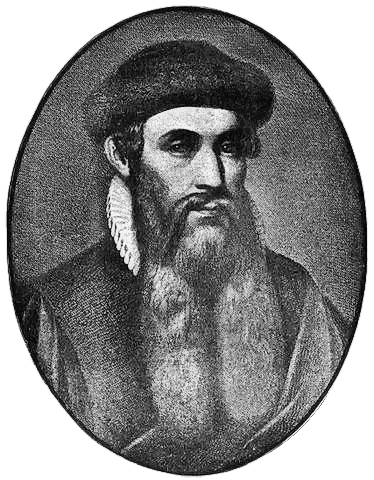Johannes Gutenberg’s Printing Press
 Gutenberg’s 42-line Bible
Gutenberg’s 42-line Bible
(1st page of Proverbs)
[>>British Library, London]
The demand for learning seemed insatiable. The answer was the production of books printed on paper from movable type, in place of the old and imperfectly copied parchment manuscripts. Forty-five copyists working for two years under Cosimo de Medici produced only two hundred volumes; by 1500 there were in Europe at least nine million books, of thirty thousand titles, and over a thousand printers. The new printing spread with a rapidity that would have been impossible with the communications of a hundred years earlier. The first surviving specimen was [120] printed in Mainz, on the upper Rhine, before 1447; three years later Gutenberg and Fust had set up there a partnership whence issued the famous forty-two line Bible and the thirty-two line Latin grammar of Donatus, symbolic of sacred and secular learning, the Reformation and humanism.
By 1465, the press had reached Italy; by 1470, Paris; London followed in 1480, Stockholm two years later, Constantinople in 1487, Lisbon in 1490, while Spain characteristically lagged behind till 1499. Thus by 1500 all the chief countries of Europe were provided with the means for the rapid multiplication of books. The consequences for intellectual life were momentous. The number of those who could share the best knowledge increased a thousandfold; it became worth while to learn to read, and to write for a wide circle of readers. A library could now contain a wide variety of secular works, instead of the few expensive writings of the fathers and doctors. Prices sank to an eighth of the former cost, and, judged by our standards, were low indeed. Ideas could now be sure of a wide hearing; and though the Church soon attempted to control the new force by her censorship, the printing-press had made it impossible ever to extirpate a living idea.
— John Herman Randall, The Making of the Modern Mind: a survey of the intellectual background of the present age (Cambridge, MA: Houghton Mifflin Co., 1940), pp. 119-120.
